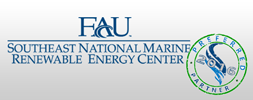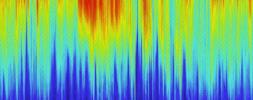The SNMREC Preferred Partner Program is an opportunity for our industry partners to collaborate more fully with the Center. This program is designed to dedicate SNMREC experts and resources to individual industry partner development needs.
Ocean Thermal Measurement
Ocean thermal energy conversion commonly uses the temperature difference between warm, surface seawater and the cold water near the ocean bottom to drive a Rankine cycle, in which a working fluid evaporates at the higher temperature and re-condenses at the lower temperature. The resulting “steam” (whether water or other substance) can drive a turbine and generator, or other mechanical conversion device.
At oceanic temperatures, ammonia/water mixtures can be used as the working fluid, provided a surface-water/deep-water temperature difference of ~20°C is available. Because the Florida Current provides a steady source of warm, tropical water into the Florida Straits, and because the bottom water in the Straits remains much colder, there is OTEC potential offshore of southeast Florida. The question is: where and how much?
To address this question, SNMREC has undertaken a program of temperature measurements using a standard CTD (conductivity-temperature-depth) instrument deployed from a small research vessel. East-west cross sections that measure temperature as a function of depth—that is, the temperature stratification—are repeated from Miami, Fort Lauderdale, Lake Worth, and Stuart on a monthly schedule (the Fort Lauderdale section is obtained weekly).
Early results have revealed that the cold water at the bottom of the Florida Straits is also present on the bathymetric feature known as the Miami Terrace, which means that from about North Miami to Boca Raton there is a cold-water reservoir close to shore and about 200 m deep.
This makes the potential for OTEC implementation in Florida all the more attractive.



